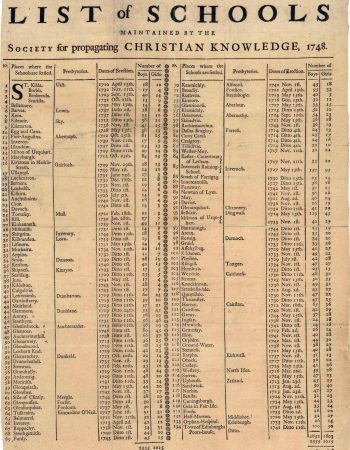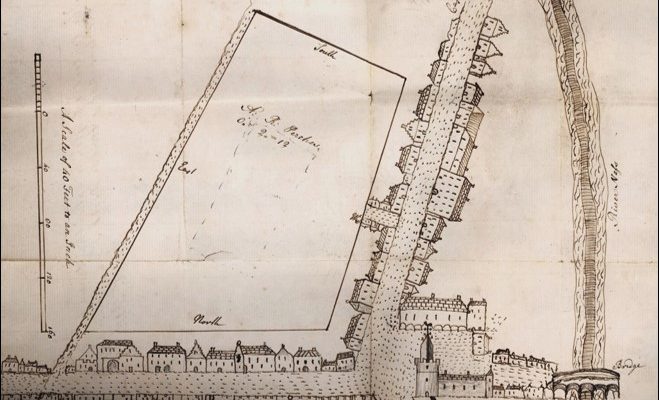Prior to 1872 there was no centralised state education in Scotland for all children. Opportunities to access schooling were unequal, often favouring boys and those from wealthy families.
In addition, the administration of the schools that did exist varied. Schools were run mainly by the Church of Scotland (and, from 1843, the Free Church of Scotland). Kirk Session and Presbytery records held by the Highland Archive Service reveal the direct involvement of the church in the management of schools including the recruitment, training, and payment of teachers, and the construction of school buildings. These schools were supported by the heritors (parish landed proprietors).
Many of the Highland parishes were large and sometimes the church worked alongside charities or societies to provide education in a particular area. One such charity was the Society in Scotland for Propagating Christian Knowledge (SSPCK). Established in 1709 with the aim of promoting education and ‘the civilisation of Highland inhabitants’, SSPCK schools were set up across the Highlands.
Education was also provided by private subscription and schools could be established as a result of a bequest or gift. An example of this is Raining’s School in Inverness which was established when John Raining, a merchant in Norwich, gave £1,000 for the setting up of a school in any part of North Britain to be administered by the SSPCK. The Society settled on Inverness as its location and the school was founded in 1727.
Inverness Burgh Council had to approve the allocation of land for Raining’s School and burgh records over the centuries give a great insight into the role town councils played in administering education in their areas – paying teachers and erecting buildings.
St Duthac’s/Dornie School in Kintail (picture below) is another example of a school established by private funds, in this instance provided by the Duchess of Leeds. Originally built as a Catholic School it subsequently opened to pupils of other denominations and became a convent school before closing in the early 1900s.

With all these bodies and organisations involved, the picture was fragmented, unequal and ripe for the overhaul that came in 1872.


